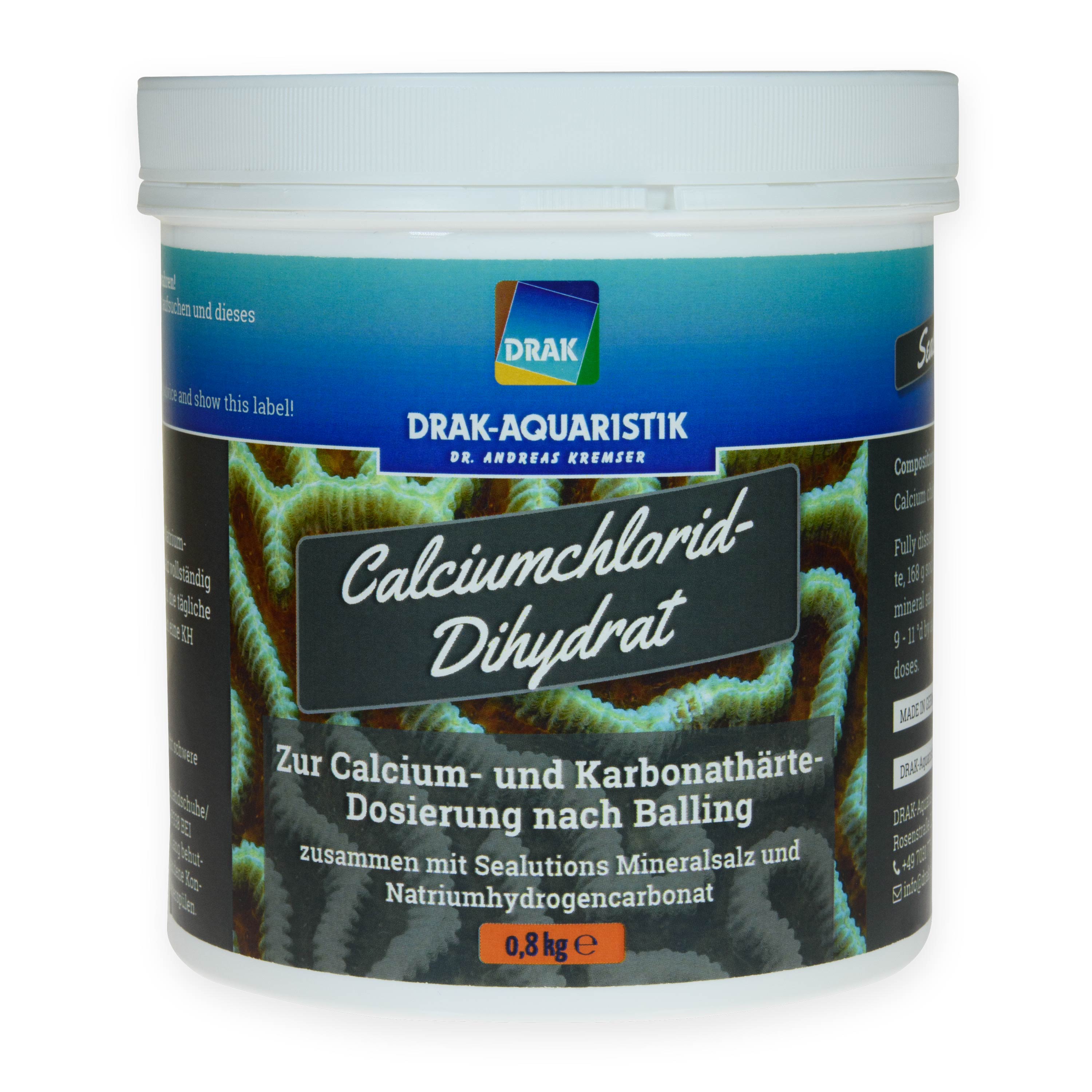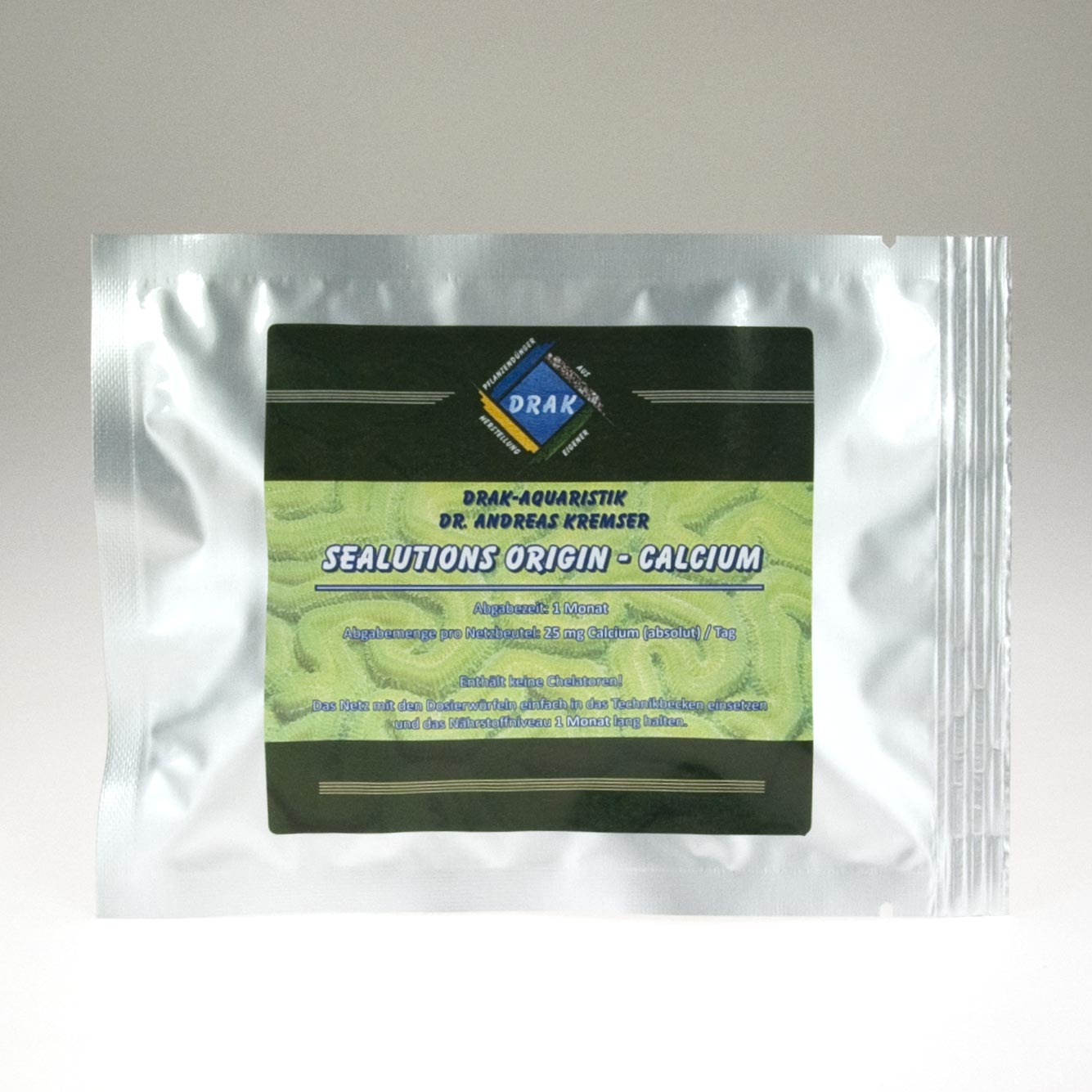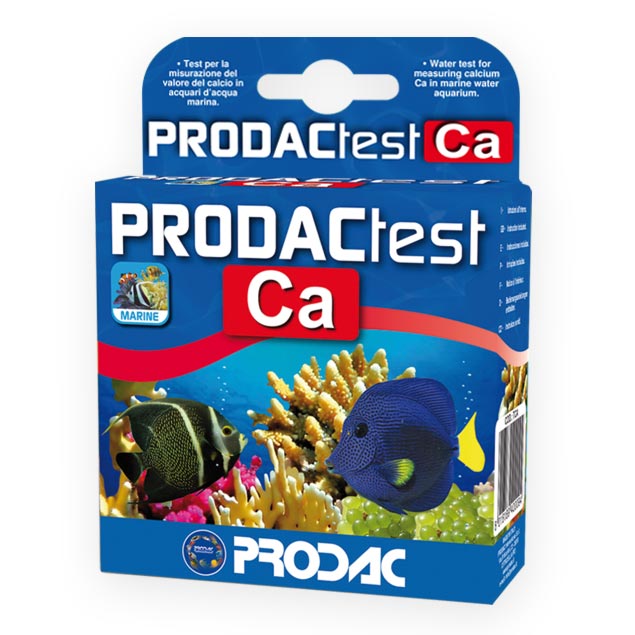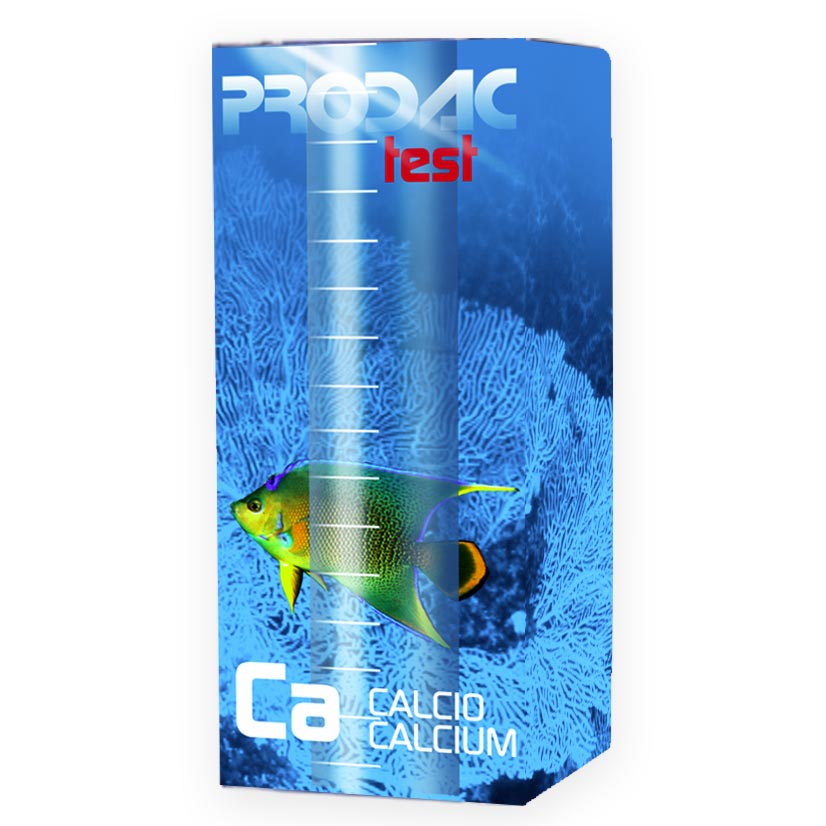Calcium chloride dihydrate - Indispensable for your marine aquarium
Overview: The importance of calcium chloride dihydrate in the marine aquarium
The natural calcium concentration in seawater is around 420 mg/l, a value that should be carefully maintained in the aquarium. The optimum calcium concentration in your saltwater aquarium, ideally between 380 and 440 mg/l, is crucial for the thriving of stony corals and other calcifying organisms. Values below 360 mg/l can result in significant limitations in the skeleton formation of stony corals. It is therefore essential to precisely regulate seawater aquariums with calcium chloride dihydrate.
Calcium levels that are too high are also problematic as they can lead to precipitation, which can affect technical equipment such as pumps. It is therefore important to maintain a balanced calcium level, in which calcium chloride dihydrate plays a key role.
Our products: High-quality calcium chloride dihydrate for your aquarium
At DRAK-Aquaristik, we offer you first-class products to optimally control the calcium content in your marine aquarium. Our range includes specially developed products such as Sealutions Calcium Chloride Dihydrate 0.8 kg and Sealutions Origin - Calcium. Both products are tailored to the needs of your marine aquarium.
Sealutions Calcium Chloride Dihydrate is an essential component for dosing calcium and carbonate hardness using the balling method. The balling method, an effective method of water maintenance, utilises a combination of sodium bicarbonate and calcium chloride dihydrate to produce soluble calcium bicarbonate, creating a stable and healthy environment for your marine aquarium inhabitants. In addition, Sealutions Sodium Bicarbonate helps to maintain the ideal carbonate hardness in the range of 9 - 11° dH, which is essential for the health of your reef tank.
Sealutions Origin - Calcium is a product designed specifically for the requirements of marine aquariums. It not only supports the calcium supply, but also contributes to the overall water quality by meeting the biological needs of your aquarium inhabitants. Both products are examples of our commitment to providing high quality calcium chloride to marine aquarists.
Application and dosage of calcium chloride dihydrate
The correct use and dosage of calcium chloride dihydrate is of the utmost importance for the health of your marine aquarium. Precise dosing ensures that your aquarium receives the correct amount of calcium to ensure healthy growth and thriving of marine life.
Correct use in the aquarium
The use of calcium chloride dihydrate in marine aquariums should be done carefully and according to the specific needs of your tank. It is important to check the water values regularly and adjust the dosage accordingly. The balling method is a tried and tested approach in which calcium chloride dihydrate is used together with other components to achieve a balanced ratio of calcium and carbonate hardness.
Dosing recommendations and methods
The dosage of calcium chloride dihydrate can vary depending on the size and biological stocking of your aquarium. For an average 300 litre reef aquarium, the initial dosage of the calcium chloride solution prepared according to the instructions is around 100 ml per day, which can be adjusted as required. It is crucial to keep an eye on the carbonate hardness and calcium levels to ensure an optimal environment for your marine life.
FAQ - Frequently asked questions about calcium chloride dihydrate in the marine aquarium
To help you get started and answer common questions, we have compiled a list of the most frequently asked questions about calcium chloride dihydrate marine aquariums.
- How often should I dose calcium chloride dihydrate in my aquarium? The dosing frequency depends on various factors, such as the size of your aquarium and the biological stocking. Regularly checking the water values is crucial to determine the correct dosage.
- Can an overdose of calcium chloride dihydrate be harmful? Yes, overdosing can lead to an increase in the calcium content beyond the optimum range, which can lead to problems such as precipitation and impairment of technical equipment. It is important to monitor the dosage carefully.





